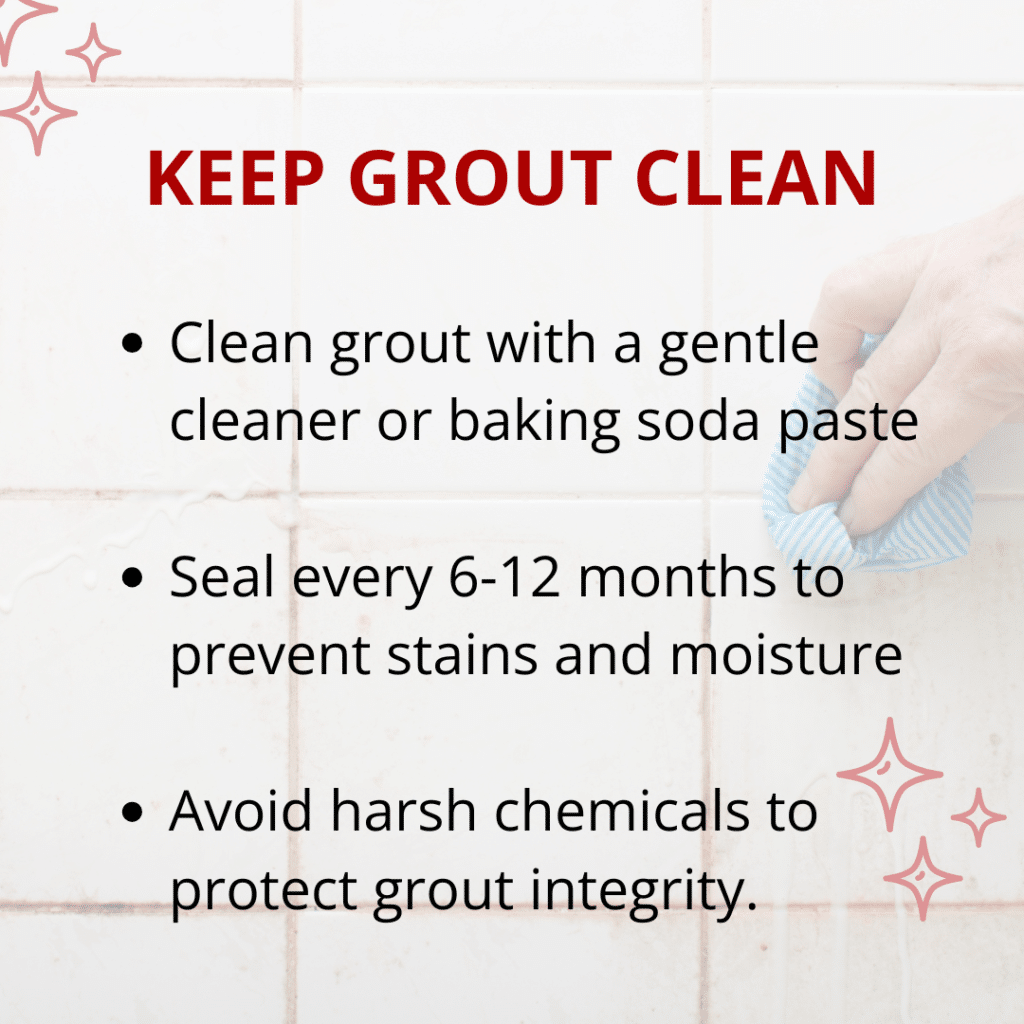Tile floors are one of the most versatile and stylish options for homeowners. They’re durable, come in a wide range of designs, and can handle heavy foot traffic. However, like any other surface in your home, they need proper care to maintain their shine and integrity. In this guide, we’ll explore the best ways to clean tile floors, tackle grout maintenance, and share expert tips to keep them looking pristine for years to come.
Why Cleaning Tile Floors Is Important
Tile floors are an investment, and like all investments, they need attention to retain their value. Regular cleaning isn’t just about aesthetics—it’s about preserving durability, promoting hygiene, preventing long-term damage, and boosting home value.
Dirt and grit can act like sandpaper, wearing down the surface of tiles over time. Clean floors reduce the buildup of allergens, bacteria, and mold. Spills and stains can penetrate grout and even certain tile types if not promptly addressed. Clean and well-maintained floors can make a significant impression during home inspections or when selling your property.
Know Your Tile Type
Not all tiles are created equal, and understanding what kind you have is crucial for proper care:
- Ceramic and Porcelain Tiles: Durable and low maintenance.
- Natural Stone Tiles (e.g., Marble, Granite, Slate): Require special care to avoid scratches and damage from harsh chemicals.
- Glass or Mosaic Tiles: Delicate and prone to scratching, needing gentle cleaning techniques.
- Terracotta and Quarry Tiles: Porous and often require sealing to protect against stains and water damage.
Essential Supplies for Cleaning Tile Floors
To clean tile floors effectively, gather the following supplies:
- For Debris Removal: Broom, vacuum, or dust mop.
- For Mopping: Microfiber mop or traditional mop.
- Cleaning Solution: Commercial tile cleaner or a homemade mixture (e.g., water and white vinegar for non-stone tiles).
- Scrubbers: Non-abrasive sponge or brush for grout.
- Optional: Steam mop for deep cleaning (check if your tile type is steam-safe).
Step-by-Step Cleaning Guide

- Sweep or Vacuum: Remove loose debris to prevent scratching during mopping. Use a broom for a quick sweep or a vacuum with a hard-floor setting to pick up fine dust and dirt.
- Prepare Your Cleaning Solution: Mix warm water and a few drops of mild dish soap for ceramic and porcelain tiles. For natural stone, stick to pH-neutral cleaners to avoid etching or discoloration.
- Mop the Floor: Dip your mop into the solution, wring it out to prevent excess water, and clean the floor using gentle, even strokes. Work in sections for the best results.
- Spot Clean Stains: For stubborn spots, use a soft cloth or sponge dipped in your cleaning solution. Avoid scrubbing too hard to prevent damage.
- Scrub the Grout: Grout often traps dirt and stains. Mix baking soda with water to form a paste, apply it to grout lines, and scrub gently with a soft-bristled brush.
- Rinse and Dry: Rinse the floor with clean water to remove any residue. Use a dry, soft towel to wipe the tiles and prevent water spots or streaks.
Tailored Tips for Different Tile Types
- Ceramic/Porcelain Tiles: Avoid oil-based cleaners, which can leave a slippery residue.
- Natural Stone Tiles: Never use acidic cleaners like vinegar, as they can damage the stone.
- Glass Tiles: Use a gentle solution and a lint-free cloth for a streak-free shine.
- Terracotta/Quarry Tiles: Seal these tiles periodically to protect against stains and moisture.
How to Maintain Grout Lines
Keeping grout lines clean and fresh requires regular care. Start by cleaning grout lines with a grout-safe cleaner or a simple baking soda paste. Apply the cleaner to the grout and gently scrub with a soft-bristled brush. This will help lift dirt and remove stains. To protect grout from future staining and moisture damage, apply a grout sealer every 6-12 months. Avoid using harsh chemicals, such as bleach or acidic cleaners, as they can erode grout over time and weaken its integrity.

Common Tile Cleaning Mistakes to Avoid
Tile floors are relatively low maintenance, but certain mistakes can lead to lasting damage. Avoid the following issues:
- Using Too Much Water: Excess water can seep into grout and cause long-term damage, leading to mold and weakening grout lines.
- Ignoring Grout Maintenance: Dirty or stained grout can make your entire floor look unkempt, even if the tiles are clean.
- Harsh Chemicals: Cleaners with bleach or acidic solutions can strip tile finishes and discolor natural stone.
- Air-Drying Floors: Allowing floors to air-dry can leave streaks and water spots, diminishing their shine.
Instead, dry your floors with a soft towel immediately after cleaning to preserve their appearance. Always use cleaners appropriate for your tile type and make grout maintenance part of your routine.
Pro Tips for Tile Floor Longevity
Maintaining tile floors for the long term is easier with a few simple habits. Use doormats at entrances to reduce dirt brought in from outside. Sweep or vacuum daily in high-traffic areas to prevent dirt from settling into grout lines. Address spills immediately to avoid stains and discoloration. Finally, schedule regular inspections to check for cracks or other damage that might require professional attention.
Why It Matters for Home Inspections
Clean and well-maintained tile floors make a great impression during home inspections. Whether you’re preparing to sell or just want peace of mind, sparkling floors show you care about your home’s upkeep. If you’re looking for a professional home inspection, our team is here to help. Contact us today to ensure your home is in tip-top shape from floors to roof.
By following these detailed steps and tips, your tile floors will stay beautiful and functional for years to come.


